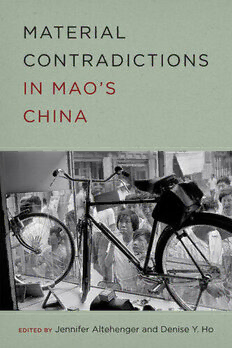
Material Contradictions in Mao's China PDF
02022·24.431 MB·English
Most books are stored in the elastic cloud where traffic is expensive. For this reason, we have a limit on daily download.
Preview Material Contradictions in Mao's China
Description:
The growth of markets and consumerism in China's post-Mao era of political and economic reform is a story familiar to many. By contrast, the Mao period (1949–1976)―rightly framed as a time of scarcity―initially appears to have had little material culture to speak of. Yet people attributed great meaning to materials and objects often precisely because they were rare and difficult to obtain. This first volume devoted to the material history of the period explores the paradox of material culture under Chinese Communist Party rule and illustrates how central materiality was to individual and collective desire, social and economic construction of the country, and projections of an imminent socialist utopia within reach of every man and woman, if only they worked hard enough.Bringing together scholars of Chinese art, cinema, culture, performance, and more, this volume shares groundbreaking research on the objects and practices of everyday life in Mao's China, from bamboo and bricks to dance and film. With engaging narratives and probing analysis, the contributors make a place for China's experience in the history of global material culture and the study of socialist modernity.
See more
The list of books you might like
Most books are stored in the elastic cloud where traffic is expensive. For this reason, we have a limit on daily download.
